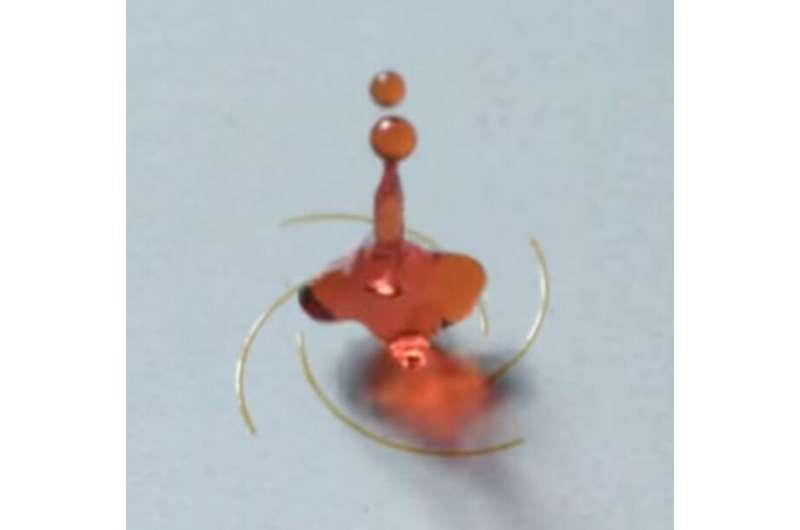March 7, 2019 report
Special surface manipulation forces dropped liquids to spiral when they rebound

A team of researchers affiliated with several institutions in China has found a way to force liquid drops to spiral as they rebound after landing on a manipulated surface. In their paper published in the journal Nature Communications, the group describes how their method works and possible applications.
Most people are well aware of what happens when a drop of water or other liquid falls onto a flat surface—it rebounds in random ways, quite often making a mess. In this new effort, the researchers changed the plain flat surface to one they describe as heterogeneous, which forced the drop to spiral upward as it rebounded in very specific ways.
To change the way a drop would rebound, the researchers first noted that one ineffective approach would be to wet the surface—that would only result in "plopping." Instead, they started by coating an aluminum plate with a nonstick chemical very much like that found in cooking sprays. They followed that up by placing a mask on some parts of the surface while leaving others exposed—those left uncovered were bathed in ultraviolet light, which made them "wettable"—water dropped on it would spread more than normally before rebounding. Notably, the masks were made in whirl patterns reminiscent of pinwheels.
When a drop of water landed on the treated surface, those parts of it that struck the wettable spirals tended to stick a little before rebounding. Those that struck the parts that had been masked, on the other hand, rebounded nearly instantly, because they had been made hydrophobic. This led to "non-axisymmetric spinning forces" applied to different parts of the drop at the same time. The result was twisting of the liquid, forcing the drop to spin as it rebounded upward.
The researchers created multiple swirl patterns and found that one of them forced the drop to spin at approximately 7,300 revolutions per minute. They suggest their technique might be used in hydro-energy collection efforts, self-cleaning devices or perhaps as a way to de-ice plane wings or car windshields.
More information: Huizeng Li et al. Spontaneous droplets gyrating via asymmetric self-splitting on heterogeneous surfaces, Nature Communications (2019). DOI: 10.1038/s41467-019-08919-2
Journal information: Nature Communications
© 2019 Science X Network




















